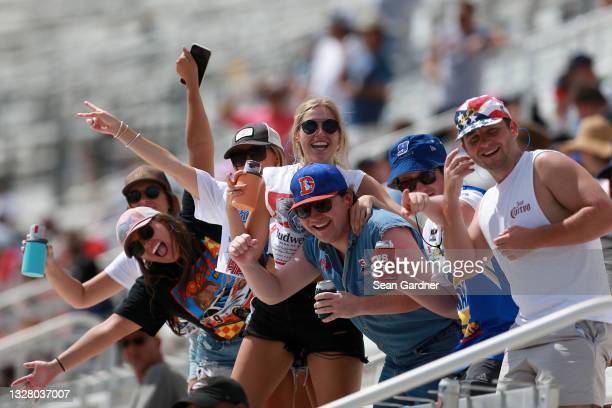
Indycars can run on oval tracks but F1 cars don't. So, comparing speed directly is pointless. However, both cars are clearly visible in the comparison photos. The Indycar's aeroshield is more distinctive than the F1 cars', but the F1 cars' front and back wings might flex. The difference between them is ultimately determined by their money.
IndyCar North America is a circuit
IndyCar races are mostly held in North America. However, there is one race that takes place in Canada. F1 races usually last approximately one and a half hours, but IndyCar races are limited to two hours, although they can be changed if necessary. While most events are located in North America there are some races with a global appeal.

The scoring is similar to that of Formula 1, with the winner receiving 50 points, second and third receiving 40 points, and so on. IndyCar's top three drivers receive five extra points. The two most successful teams also get five more points. Indy 500's first and second-place finishers get five points. However, this does not apply to all teams.
IndyCar chassis can only be made to standard by one manufacturer
IndyCar has the same chassis design as Formula One. The chassis manufacturers use the same manufacturing processes and there are no significant differences between them. Aerodynamics are the only difference between these two types of cars. The engines used by IndyCars are twin-turbocharged 2.2-litre V-6 engines from Chevrolet or Honda. These engines can produce between 550 and 700 bhp depending on the boost and surface.
The IZOD IndyCar Series is making investments to increase technical staff and facilities, positioning itself as a technical leader. In addition, the Series has formed an ICONIC Advisory Committee to review next-generation chassis and engines. The group is comprised of retired Air Force Gen. William R. Looney III (ret.), Rick Long, Eddie Gossage, Neil Ressler, and Neil Ressler. The ICONIC Advisory Committee consists industry leaders who give input on the next generation chassis and engines.
IndyCar can go faster around ovals than F1 cars
First, the big question about the differences in the Indy and F1 cars is whether Indycars can reach higher speeds. Indy cars can run on oval tracks while F1 cars have to go around long twisty roads. While both cars can travel at high speeds, Indy car are more efficient on oval tracks because of their higher downforce.

The other difference between the two is the types of fuels that are used in each. IndyCar cars consume more ethanol and F1 cars use less leaded fuel. IndyCars come with carbon fiber brakes, while F1 cars are equipped only with traditional braking systems. F1 cars can withstand wet conditions better than the oval-track version, but have better braking systems.
FAQ
What type of race cars do race car drivers use to drive?
Modern racing cars usually use engines. These engines are very similar to those used in normal passenger cars.
Instead of using petrol they run on compressed Air.
There are many types of car racing.
There are two major categories of car racing. Open-wheel and closed wheel. Open wheel races include IndyCar, NASCAR, Champ Car, Formula One, etc. Closed-wheel races include Formula 3000, DTM, GP2, etc.
What is a pitstop?
Pit stops are when you stop driving and allow someone else to drive. It's also known by the pit lane.
Statistics
- Petty has won 200 NASCAR Cup Series races, a likely unbreakable record, along with a series record seven Cup championships. (frontstretch.com)
- In 2013 Ferrari had an estimated team budget of $470 million, while elite IndyCar teams have an estimated annual budget of $15 million, according to FormulaMoney. (businessinsider.com)
- This change may give an improvement of up to 29% fuel efficiency. (en.wikipedia.org)
- According to Toyota, the 390-hp-plus 2019 Yaris WRC runs out of gearing after 124 mph, 19 mph less than the crazy Yaris GR that's currently sitting on dealer lots outside of the U.S. BONUS: (motortrend.com)
- Acceleration is a little gentler (relatively speaking) too, with 0-100km/h taking an estimated 3.1 seconds and 0-200km/h covered in 7.8 seconds. (autosport.com)
External Links
How To
How to Get Sponsors
To attract sponsors, it is important to have a strong following. Begin by building relationships and connections with others who are involved in racing. They could help with sponsorship deals. Also, attend events such as autocrosses, drag races, and rallies. These types of events can boost your social media presence, and increase your chances for landing sponsorships.